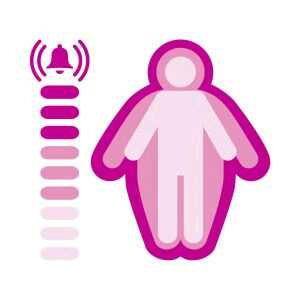
A physical yoga practice (called Asana) has received quite a bit of press recently for its ability to help men and women with diabetes. Diabetic individuals may see a significant decrease in high blood sugar and other symptoms of diabetes with by adopting yoga as their primary source of exercise.
The physical practice of yoga is life-changing, but there are also some philosophical practices associated with yoga. Some of these can not only apply to a diabetes patient but can actually improve the lives of people with diabetes.
#1. Brahmacharya (Non-Excess)
The first principle, Brahmacharya, explains itself. Diabetes (Type 2) often develops as a  result of excess. Excessive unhealthy food intake, excessive sedentary behavior, or excessive risk factors such as genetic background can all be linked to the onset of metabolic disorders. Excess is the best friend of diabetes and thrives on its presence.
result of excess. Excessive unhealthy food intake, excessive sedentary behavior, or excessive risk factors such as genetic background can all be linked to the onset of metabolic disorders. Excess is the best friend of diabetes and thrives on its presence.
For that reason, adopting a practice of avoiding excess is a principle that applies to both yoga and diabetes. In yoga, you should not push yourself to a place of injury while practicing postures, and in diabetes, you should not push yourself to a place of injury through excessive food consumption or a failure to stimulate your muscles and circulatory system.
#2. Ahimsa (Non-Violence)
This particular principle has several different interpretations surrounding it. Some say that it means not to do violence to others, which encourages pacifism and veganism, while others say that non-violence applies to literally everything, which includes not doing violence to yourself.
Looking at Ahimsa this way, as an all-encompassing practice, non-violence means refusing to enact violence upon yourself by engaging in practices that can harm you as a diabetic. Eating poorly, skipping exercise and failing to take medication and to check your body regularly for signs of complications could all easily be interpreted as self-inflicted violence. These actions, therefore, should be avoided.
#3. Tapas (Self-Discipline)
 To round them out: the concept of Tapas. Tapas is interpreted as self-discipline or the art of training your senses. To adequately manage your condition, you must employ self-discipline, particularly if troublesome eating and exercising habits are at the root of your diagnosis. Self-discipline will help you remain careful when choosing what food to eat, what activities to engage in, what medications to take, and how consistently you take all of your medication and supplements.
To round them out: the concept of Tapas. Tapas is interpreted as self-discipline or the art of training your senses. To adequately manage your condition, you must employ self-discipline, particularly if troublesome eating and exercising habits are at the root of your diagnosis. Self-discipline will help you remain careful when choosing what food to eat, what activities to engage in, what medications to take, and how consistently you take all of your medication and supplements.
Training your senses is also useful in helping you stay aware of any worrisome changes in your body such as the development of sores or changes in your vision. Training your senses can also help stress levels remain low, which can lead to improvements in blood pressure and overall mental condition.
ReferencesAEYT. Accessed 7/30/17.
Center of Yoga and Health. Accessed 7/30/17.
